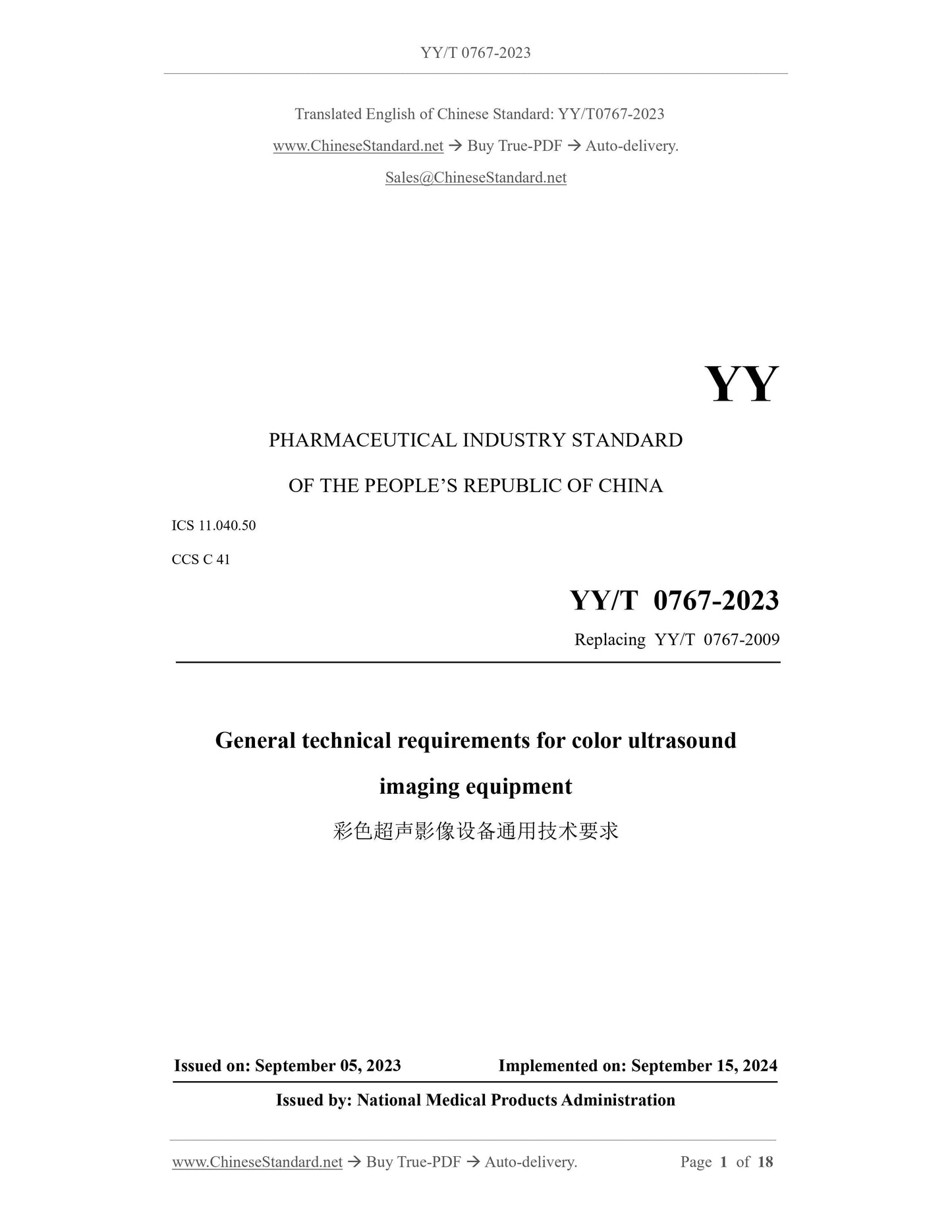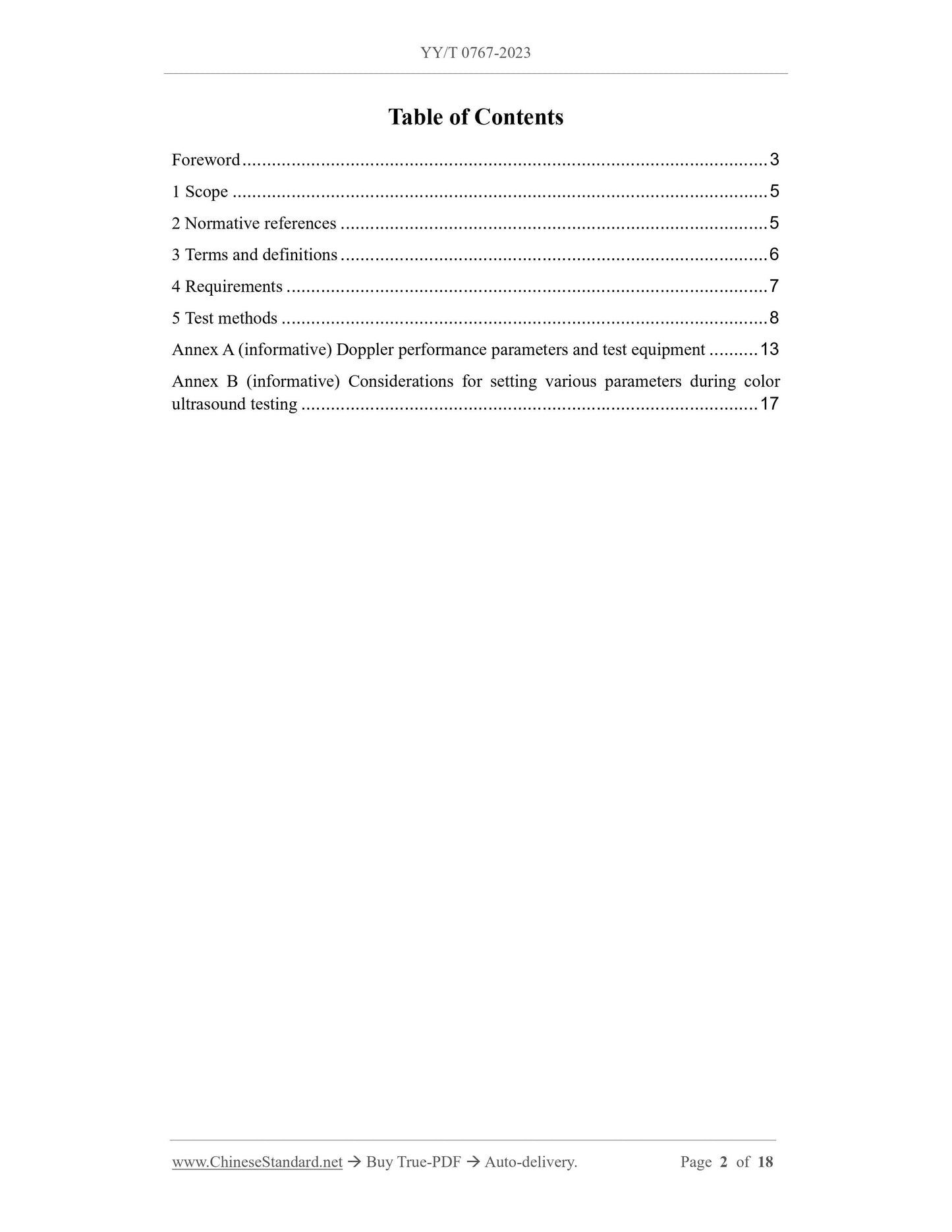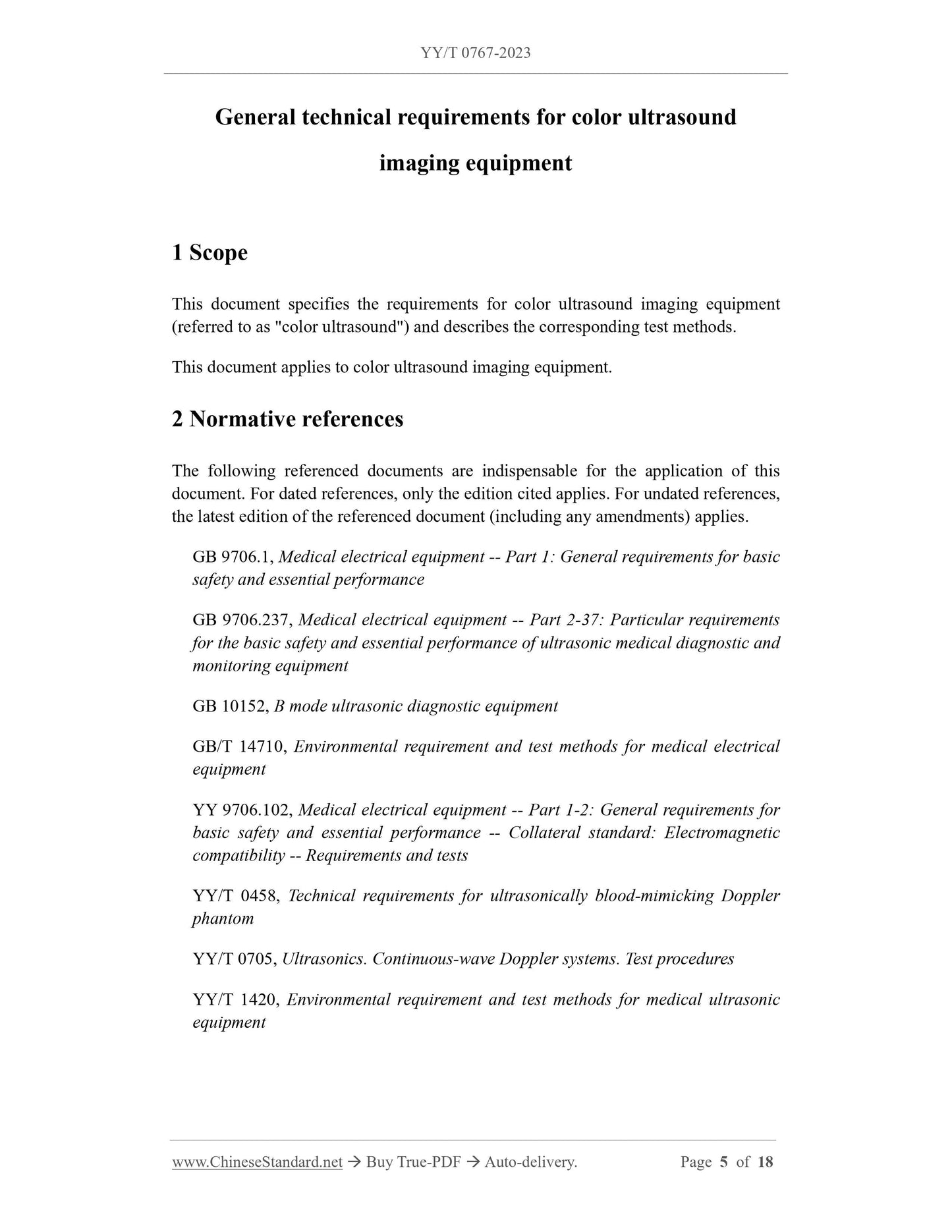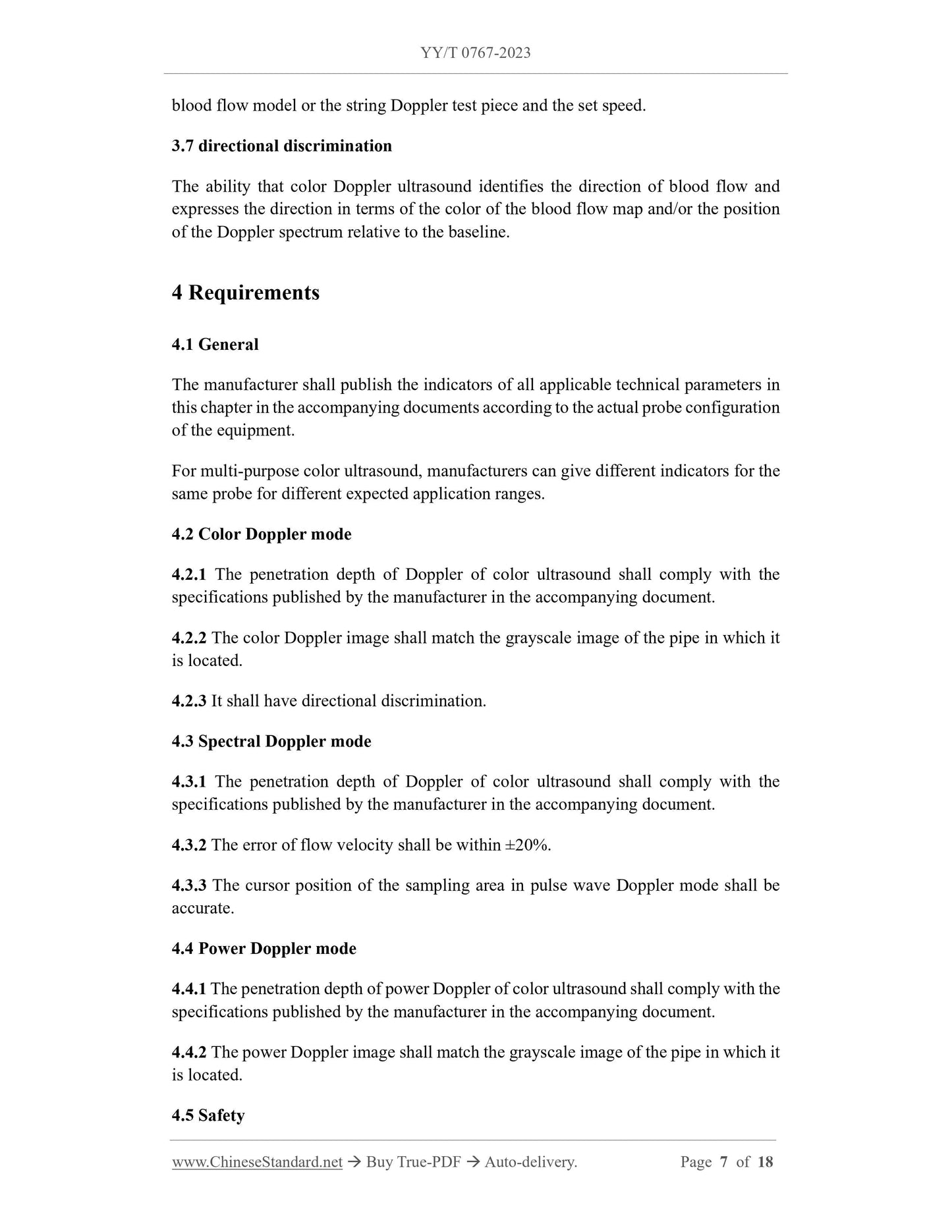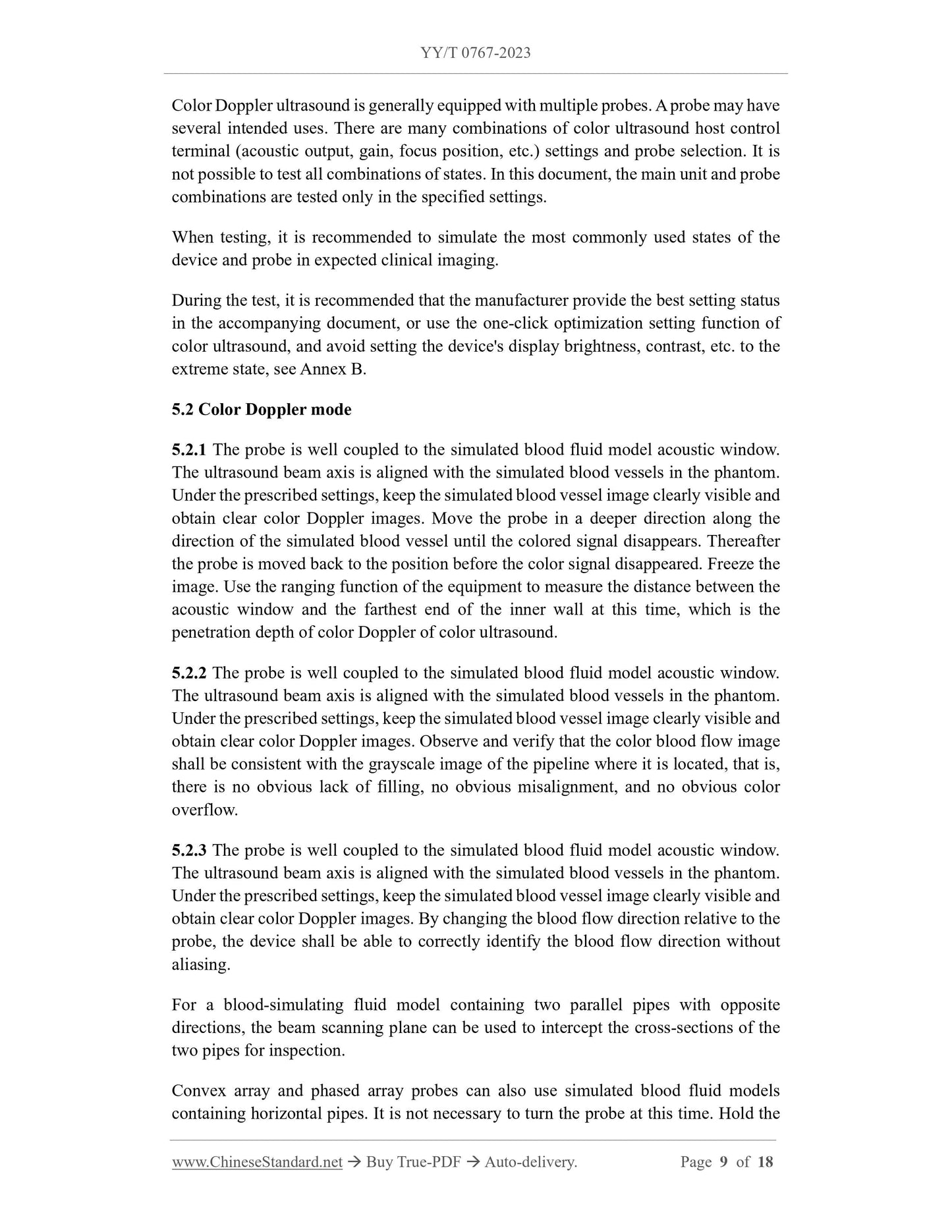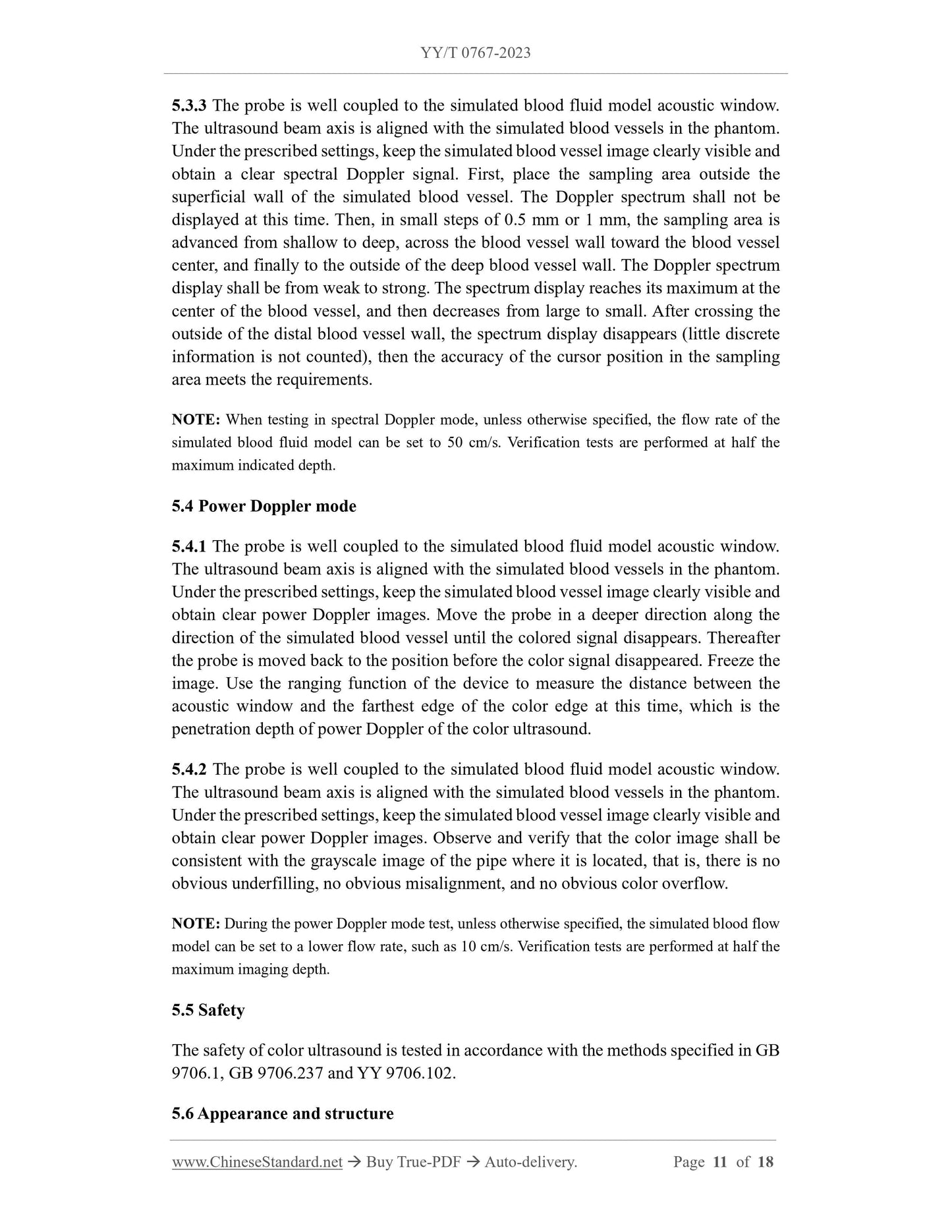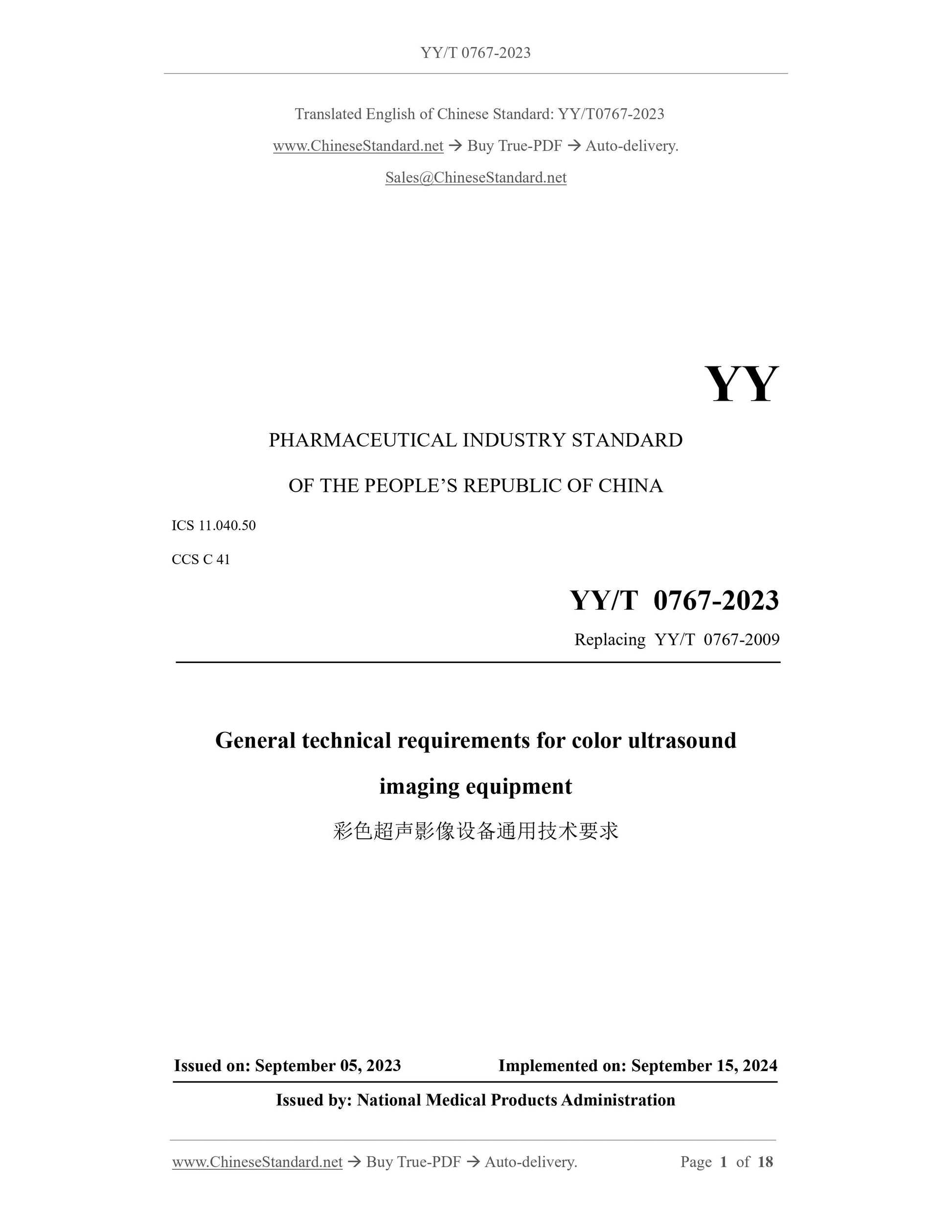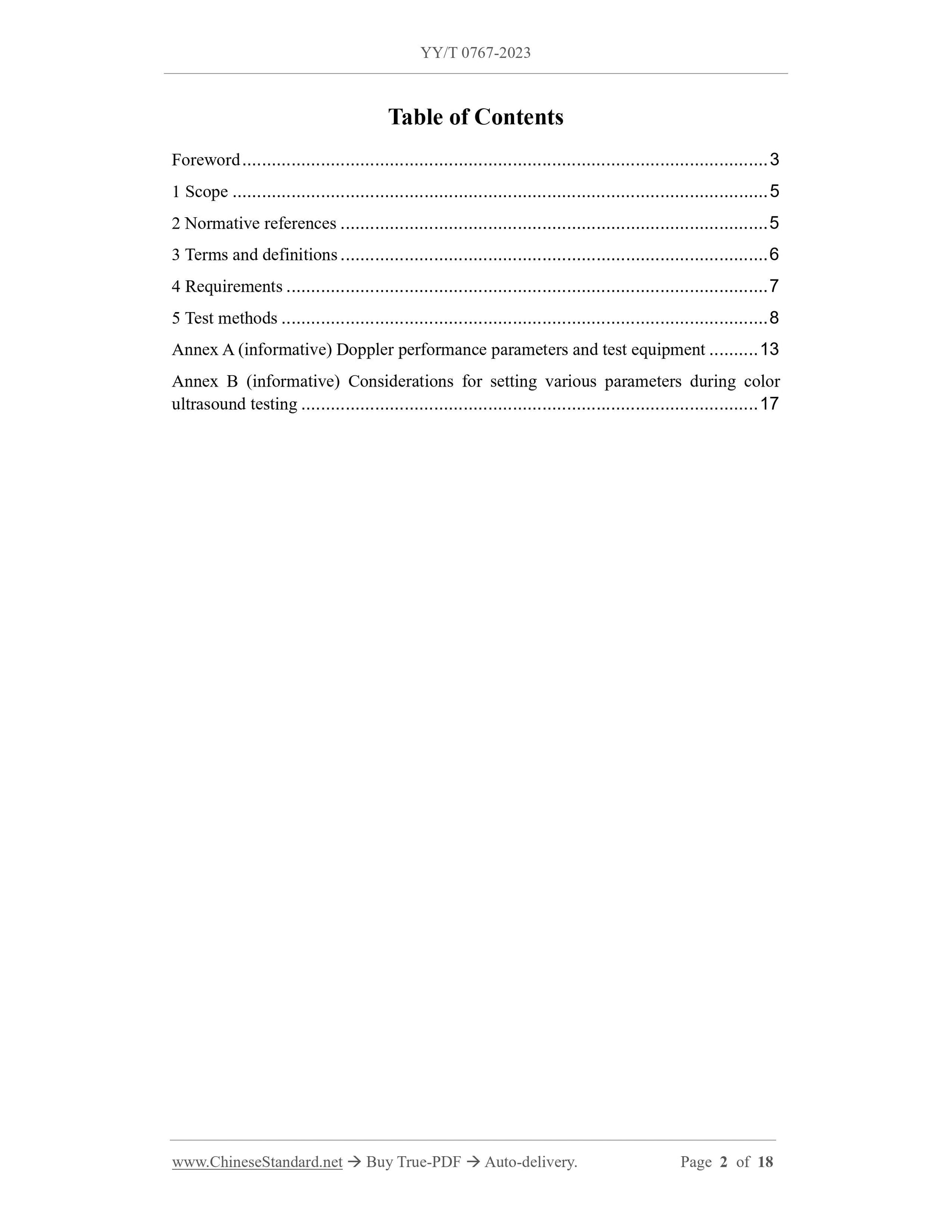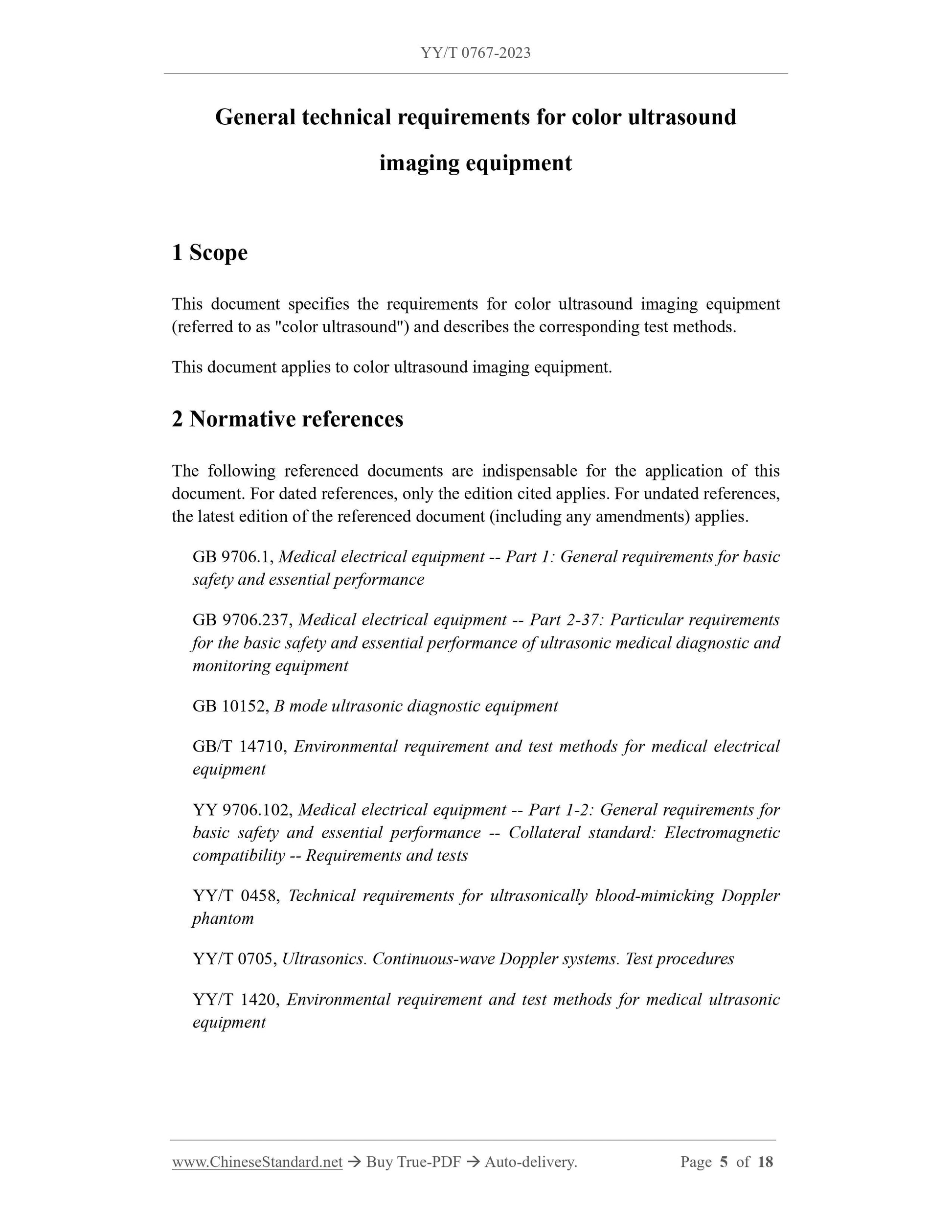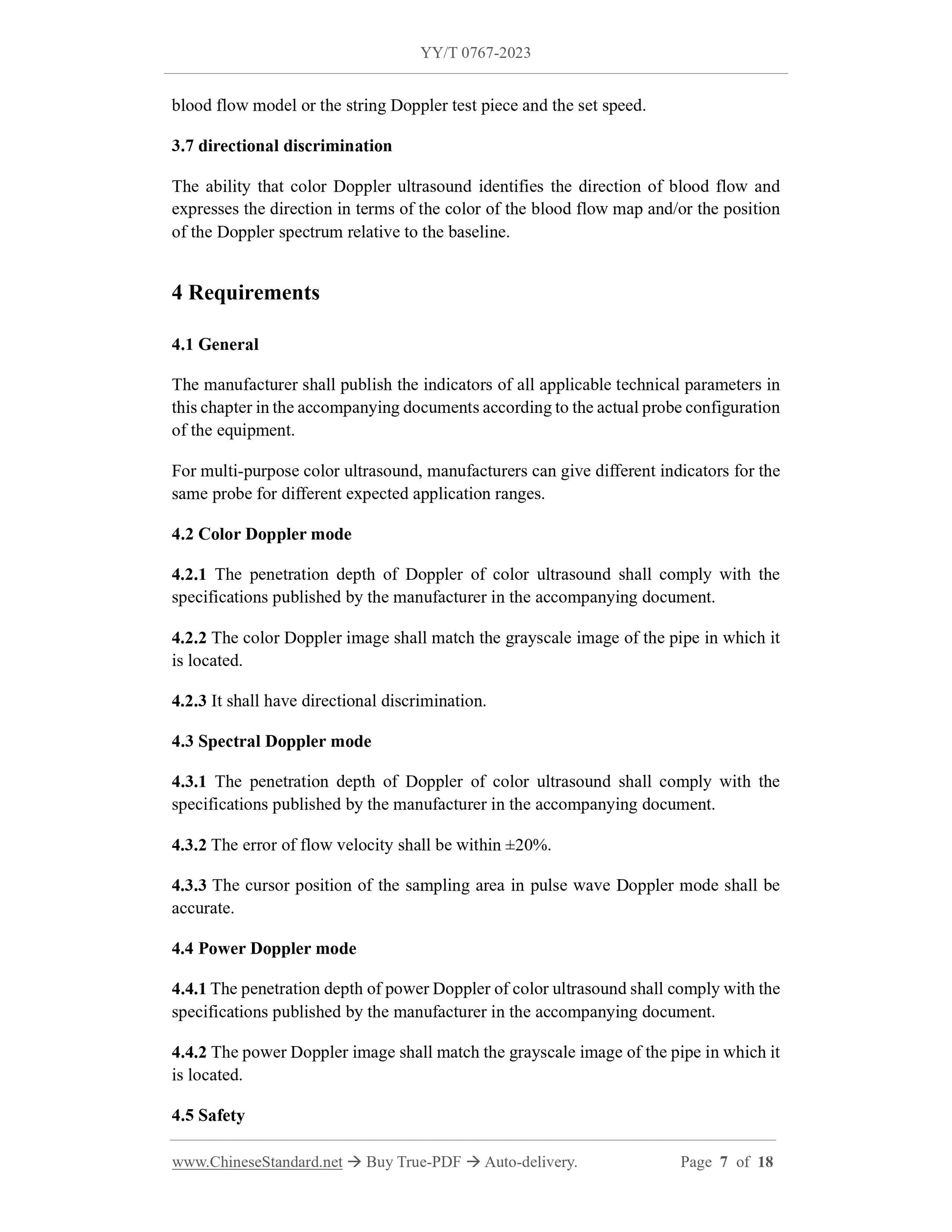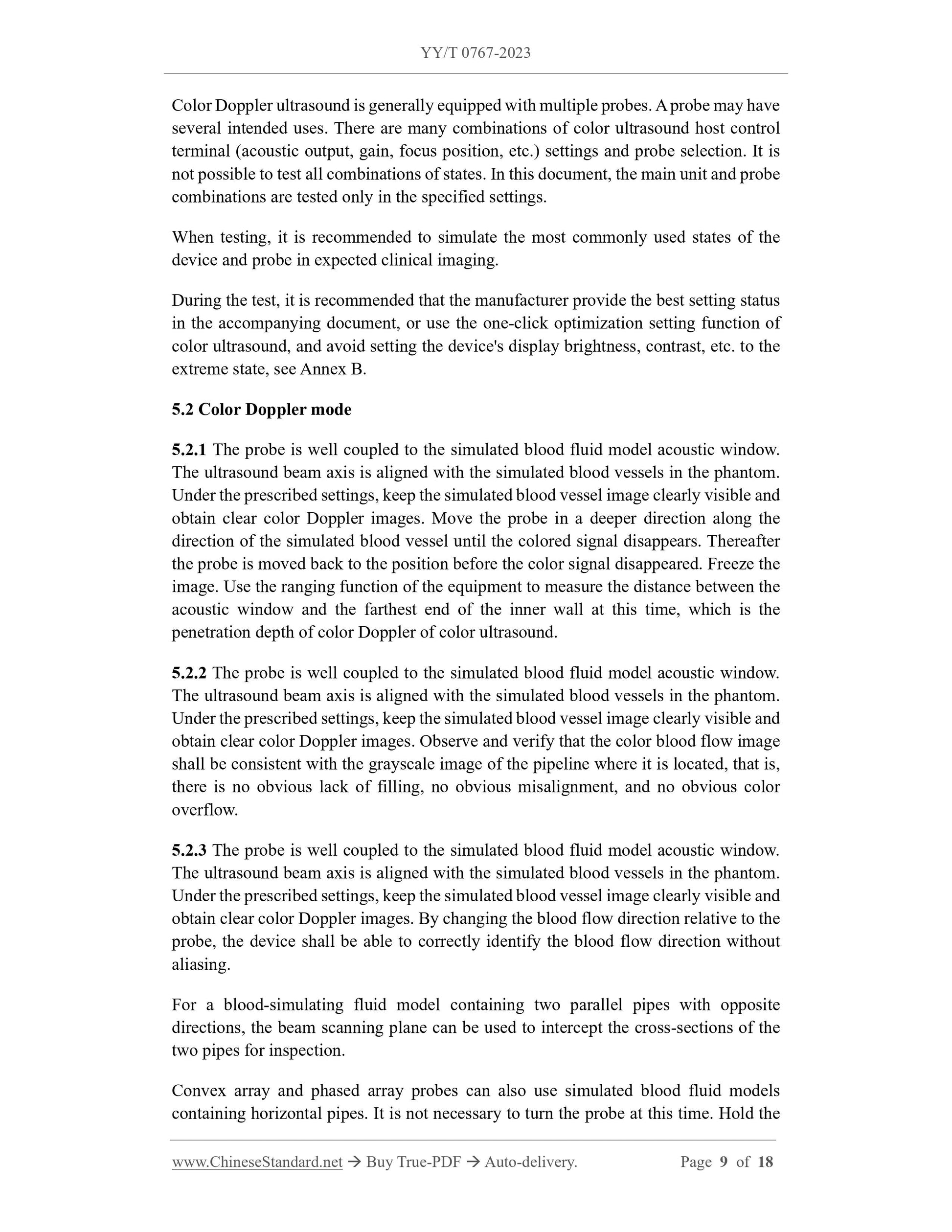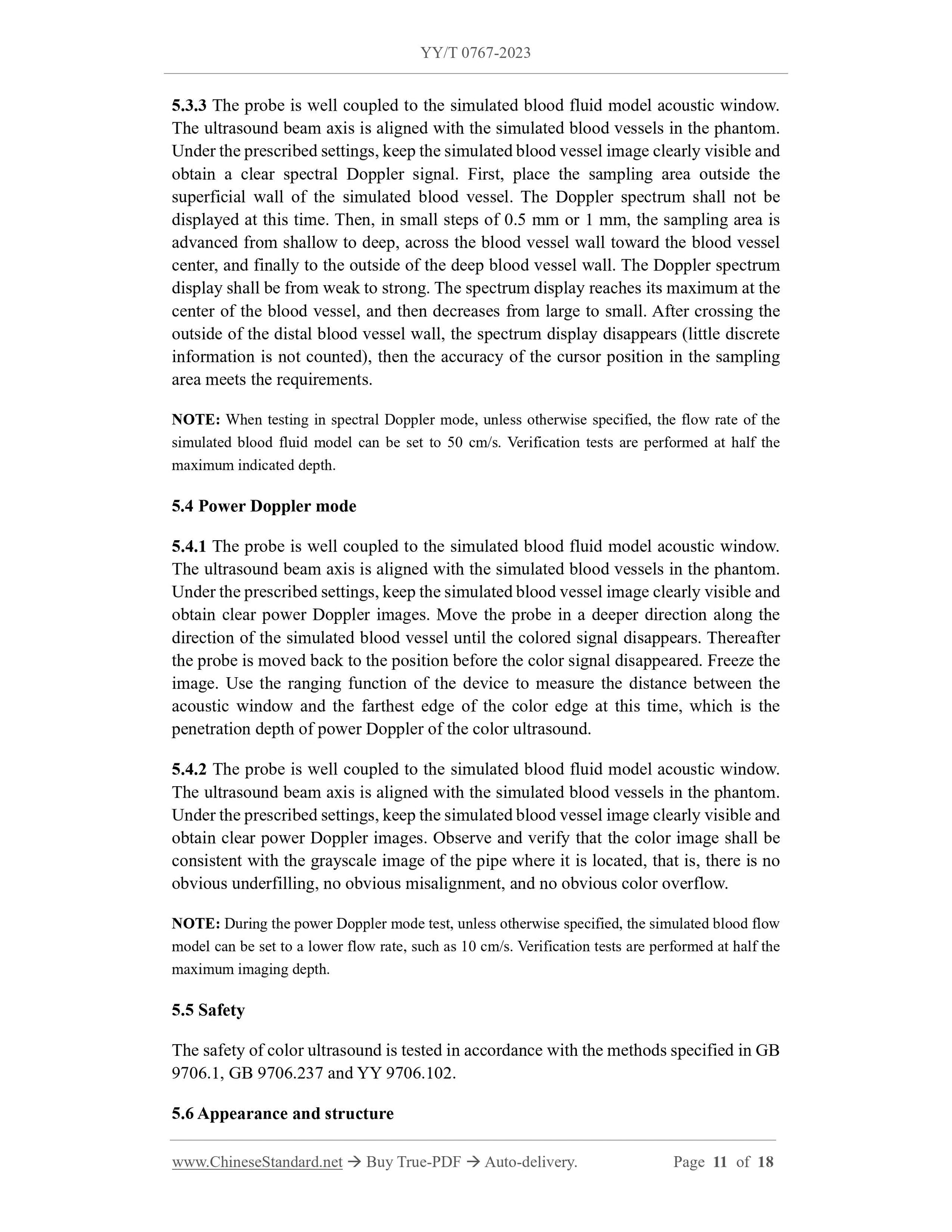1
/
of
6
www.ChineseStandard.us -- Field Test Asia Pte. Ltd.
YY/T 0767-2023 English PDF (YY/T0767-2023)
YY/T 0767-2023 English PDF (YY/T0767-2023)
Regular price
$230.00
Regular price
Sale price
$230.00
Unit price
/
per
Shipping calculated at checkout.
Couldn't load pickup availability
YY/T 0767-2023: General technical requirements for color ultrasound imaging equipment
Delivery: 9 seconds. Download (and Email) true-PDF + Invoice.Get Quotation: Click YY/T 0767-2023 (Self-service in 1-minute)
Newer / historical versions: YY/T 0767-2023
Preview True-PDF
Scope
This document specifies the requirements for color ultrasound imaging equipment(referred to as "color ultrasound") and describes the corresponding test methods.
This document applies to color ultrasound imaging equipment.
Basic Data
| Standard ID | YY/T 0767-2023 (YY/T0767-2023) |
| Description (Translated English) | General technical requirements for color ultrasound imaging equipment |
| Sector / Industry | Medical Device and Pharmaceutical Industry Standard (Recommended) |
| Classification of Chinese Standard | C41 |
| Classification of International Standard | 11.040.50 |
| Word Count Estimation | 14,166 |
| Date of Issue | 2023-09-05 |
| Date of Implementation | 2024-09-15 |
| Older Standard (superseded by this standard) | YY/T 0767-2009 |
| Issuing agency(ies) | State Drug Administration |
| Summary | This standard specifies the requirements for color ultrasound imaging equipment and describes the corresponding test methods. This standard applies to color ultrasound imaging equipment. |
Share
